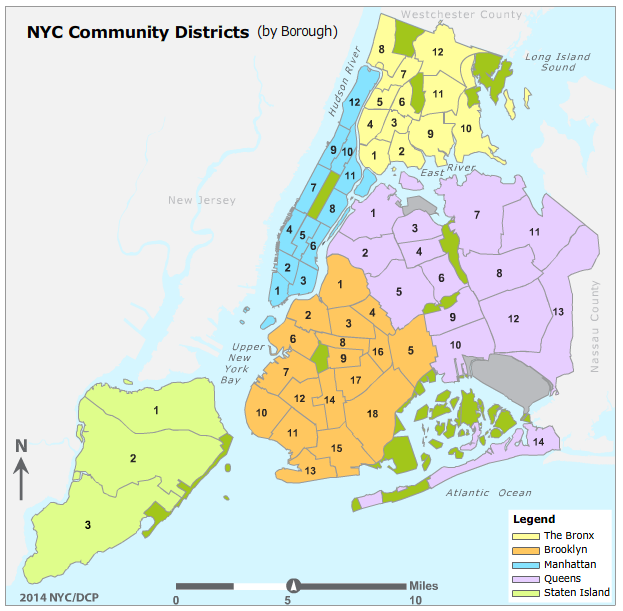While we tend to think of neighborhoods as stable, geographic places, neighborhoods seldom have "official" boundaries and their social, economic, and geographic character can change over time. Researchers Osborn Elliot and Michael E. Clark note that while people don't always agree on neighborhood boundaries, "neighborhoods are 'real' social entities." By researching neighborhoods, we can come to understand a city and its residents. In the process, we might also learn about some of the different ways that cities are organized. This map created in 2014 by the NYC Department of City Planning displays neighborhoods; however, notice that there are no lines indicating where one neighborhood ends and another begins.




